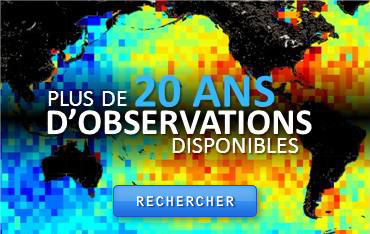Actualités
GPSP instrument status and potential impacts for Users
The NASA/JPL-provided payload GPS instrument (GPSP) on Jason-2 began to exhibit anomalous behavior on 23 August 2014. The anomaly details and the potential impacts to the mission are outlined below.
The NASA/JPL-provided payload GPS instrument (GPSP) on Jason-2 began to exhibit anomalous behavior on 23 August 2014. The anomaly details and the potential impacts to the mission are outlined below.
Summary of Events:
On 23 August 2014, the primary GPSP-A instrument stopped outputting data. Despite operations to try to recover the instrument, it currently remains inoperable and has been turned off. JPL continues to investigate the GPSP-A anomaly, to determine if this receiver could be re-used again at some future date.
On 26 August 2014, the redundant GPSP-B instrument was turned on but did not initially provide usable data. A new software library upload was performed on 8 September 2014, and the GPSP-B then began to provide usable data on 9 September 2014, however this data has recently been sporadic during the recent fixed-yaw period (beginning on 30 September until 10 October 2014).
Impacts for POD :
Evaluations of the impact of the redundant GPSP-B data on GPS precise orbit determination (POD) are underway, and will be discussed in detail at the upcoming OSTST meeting. Results from data collected when the satellite was yaw-steering mode (up until 30 September), suggest that 1-cm accuracies can be achieved. Higher data scatter is observed (vs. GPSP-A), but this could be due to the absence of comparable antenna calibrations. The GPSP-B receiver is connected to a separate antenna, and preliminary calibrations from on-orbit data have not yet been applied.
Accuracies of test GPS-only POD solutions were severely degraded when the satellite transitioned to fixed-yaw mode on September 30, due to significant outages in tracking data on the second (L2) GPS frequency. The orbit accuracy improved gradually through 7 October, commensurate with improving L2 coverage. It has been suggested that variations in the quantity of L2 data are related to instrument temperature changes. POD performance will be monitored closely after the satellite transitions back to yaw-steering mode (on 10 October.)
As a consequence, the production of the Precise Orbit Ephemeris (POE) for the Jason-2 GDR is adapted. Cycles 226 and 227 will be produced without GPSP measurements (DORIS+SLR data only). A full status on the POE production will also be discussed at the OSTST meeting.
To date, the GPSP outages and receiver swap will have affected the following Jason-2 cycles :
Cycle 226: (21-Augâ30-Aug)
Cycle 227: (30-Augâ09-Sept)
Cycle 228: (09-Septâ19-Sept)
Cycle 229: (19-Septâ29-Sept)
Cycle 230: (29-Septâ09-Oct)
Impacts for core mission products :
Near Real Time products (OGDR) and Interim Geophysical Data Record (IGDR) are not impacted by the GPSP outages. They rely on DORIS measurements only.
As stated above, the Geophysical Data Record (GDR) -because using the POE- will be slightly impacted. Nevertheless, the cycle 226 currently under release is totally compliant with the mission requirements. The systematic cycle by cycle CALVAL made by CNES and JPL will continue to guarantee the quality of the delivered products.
Impacts for added-value products :
The GPS data from GPSP-B are being used to support generation of the research-grade NRT-SSH products at JPL for both Jason-2 and SARAL. Users of these products should be alert to potential inconsistencies in the product accuracies linked to the behavior of the receiver.
Thanks to the JPL GPSP Instrument team, the NOAA and CNES OPS teams and to the Joint Cal/Val teams for supporting this instrument swap and anomaly investigation.
Glenn Shirtliffe â JPL, Thierry Guinle â CNES

















